The Samsung 960 EVO (1TB) Review
by Billy Tallis on November 15, 2016 10:00 AM ESTAnandTech Storage Bench - The Destroyer
The Destroyer is an extremely long test replicating the access patterns of very IO-intensive desktop usage. A detailed breakdown can be found in this article. Like real-world usage and unlike our Iometer tests, the drives do get the occasional break that allows for some background garbage collection and flushing caches, but those idle times are limited to 25ms so that it doesn't take all week to run the test.
We quantify performance on this test by reporting the drive's average data throughput, a few data points about its latency, and the total energy used by the drive over the course of the test.
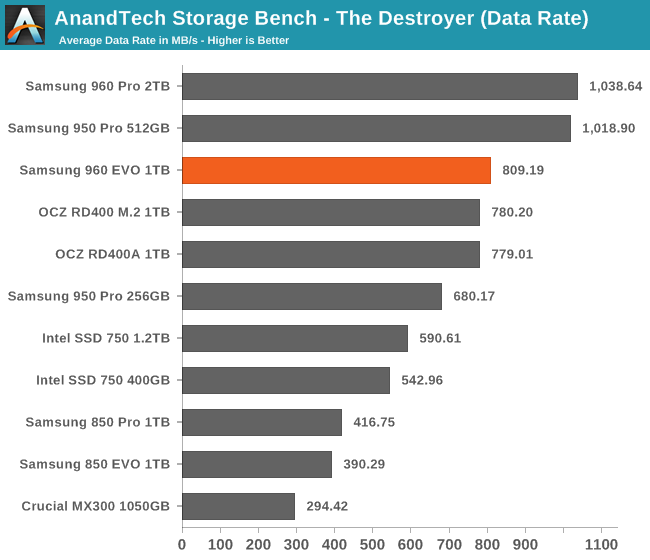
The 960 EVO is substantially slower than both the 950 Pro and 960 Pro, but the 960 EVO is faster than the flagship SSDs from Toshiba and Intel.
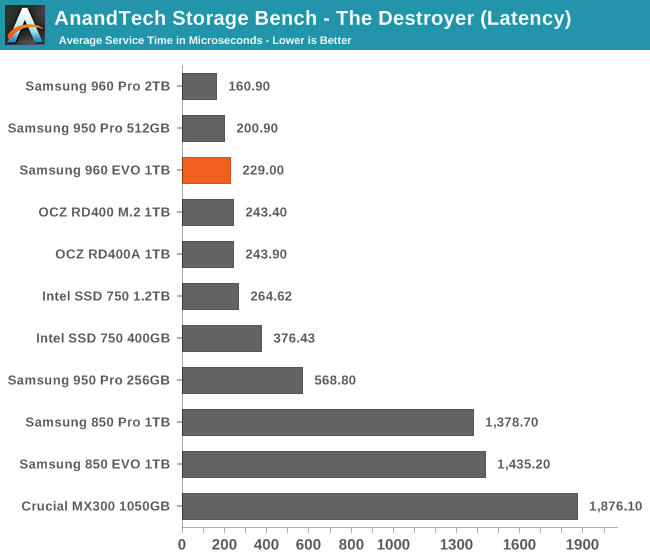
The 960 EVO delivers average service times on par with other high-end PCIe SSDs, and is still slightly faster than any non-Samsung drive.
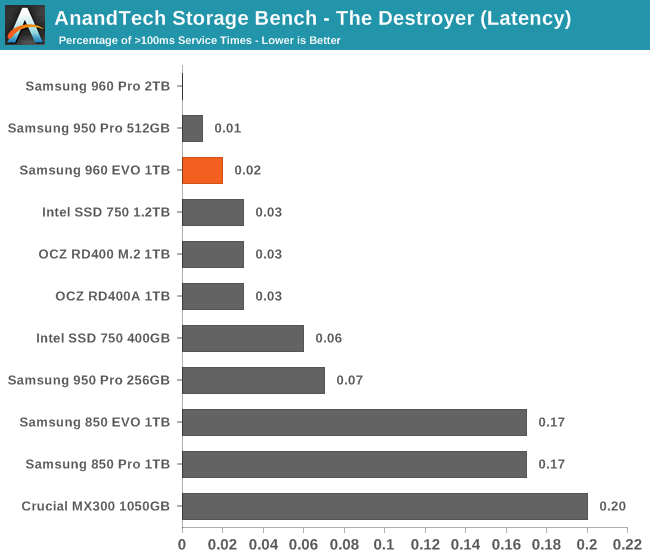
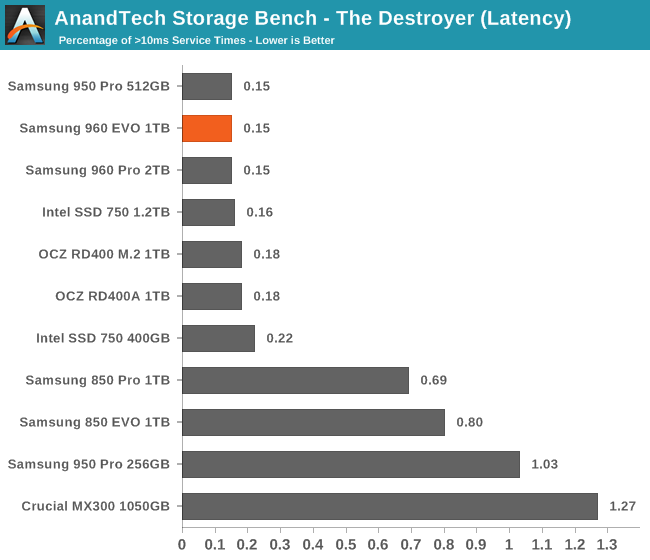
In the frequency of high-latency outliers, the 960 EVO is surpassed only by Samsung's 950 Pro and 960 Pro.
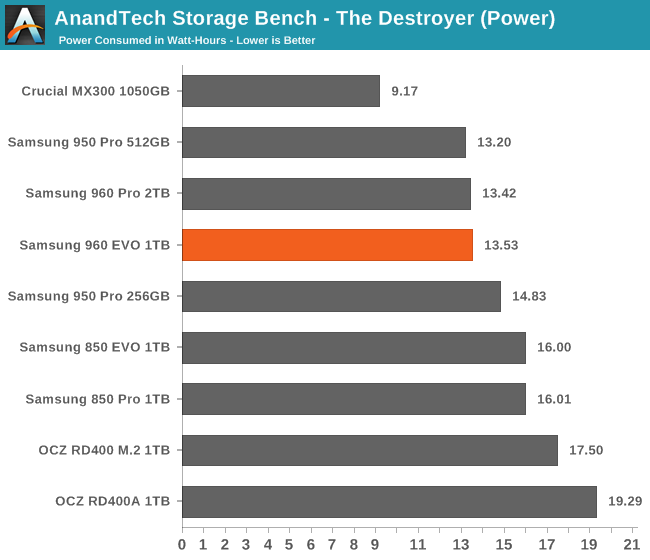
Despite using TLC NAND, the 960 EVO manages comparable power efficiency to the 960 Pro, putting it ahead of the fastest SATA drives but still drawing substantially more power than the most efficient SATA SSDs.










87 Comments
View All Comments
ex_User - Tuesday, November 15, 2016 - link
Vaporware. 'Nuff said.Magichands8 - Tuesday, November 15, 2016 - link
This is magnificent! Not only has Samsung produced an SSD that under performs its own previous generation product but one that manages to do so while using even MORE power at an even HIGHER price per GB! They even put it on a form factor that makes the drive almost entirely irrelevant! The only thing missing is a feature that makes the modules randomly explode upon contact with the users computer.Dug - Tuesday, November 15, 2016 - link
What are you talking about?BrokenCrayons - Tuesday, November 15, 2016 - link
You have a unique perspective. :)Daggoth - Tuesday, November 15, 2016 - link
I have a question, isn't the z97 chipset capped at 2GB per second due to DMI 2.0? Isn't this a problem for the max sequential reads?Billy Tallis - Tuesday, November 15, 2016 - link
I test PCIe SSDs in the primary PCIe 3.0 x16 slot, because the riser card used for power measurement is a 16-lane low-profile card.Bullwinkle J Moose - Tuesday, November 15, 2016 - link
The 960 Pro is much better price over the duration of WarrantyI can generally kill 1 out of 4 SSD's within the warranty period
so if I buy 4 960 Pro's and 4-960 EVO's, here is the breakdown @ 500GB
4-960 Pro's = $330 X 4 or $1320 divided by 5yr warranty = $264 per year for 5 years
or
4-960 EVO's = $250 X 4 or $1000 divided by 3 years = $333.33 per year for 3 years
per year cost under warranty is WAY better for the PRO!
3 year warranty with TLC just doesn't do it for me
Bullwinkle J Moose - Tuesday, November 15, 2016 - link
I would REALLY need to be trying to kill at least 1 out of 4 but I could prolly do itSo tell me more about the internal speed Billy.....
How many seconds does it take to copy and paste 100GB to and from the same 960EVO?
and from the 960PRO?
shabby - Tuesday, November 15, 2016 - link
Why wasn't the 256gb version tested? Tom reviewed it and it was kinda meh compared to the rest of the mlc drives, it was as bad as the 600p in some cases.Billy Tallis - Tuesday, November 15, 2016 - link
The 250GB was tested. It died. See page 1 for details.